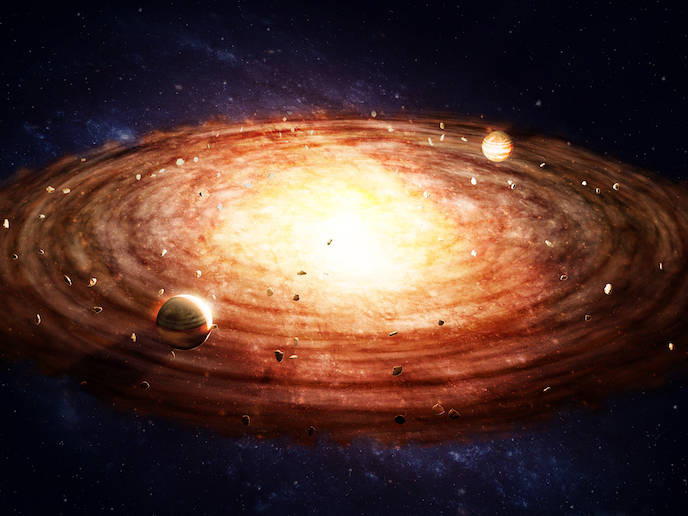New imaging techniques reveal planet nurseries in unprecedented detail
An important goal for astrophysics is to detect planets still forming in their natal environment of protoplanetary gas and dust discs less than a few million years old. The ImagePlanetFormDiscs project funded by the European Research Council has developed imaging techniques to help the search at unprecedented small scales, a fraction of Earth’s solar system orbit. The project also used simulations to show how these discs respond to the presence of a planet or the gravitational pull of multiple stars. Studying how matter is accreted in a young binary star system enabled the team to demonstrate that interferometry techniques can separate out the accretion contributions of a companion star from those of the larger primary star. “By probing different wavelengths and spatial scales, our studies trace the full extent of the protoplanetary discs, from scales corresponding to Mercury’s orbit to ten times Neptune’s orbit in our solar system,” says Stefan Kraus, project coordinator.
Peering through the dust
The team characterised the oddly shaped disc of GW Orionis and created a 3-dimensional model by combining thermal dust imaging and scattered light imaging. “This was a ‘eureka’ moment as our observations show the disc to be strongly warped, not flat. To understand the cause of this extreme disc distortion, we mapped the precise orbits of the three stars in its centre,” adds Kraus. A simulation of the disc around GW Orionis suggested that the competing gravitational pull of three stars has torn and warped the disc. “While the process of disc tearing was theoretically predicted, this is the first time it has actually been observed,” remarks Kraus. The team also imaged the disc around the star V1247 Orionis, well studied with ALMA and the VLT, at multiple wavelengths finding a crescent-shaped asymmetry suggesting a dust-trapping vortex, possibly triggered by an as yet undiscovered planet. Furthermore, using high-spectral resolution interferometry, the team for the first time measured the spin-orbit orientation of a directly imaged exoplanetary system, Beta Pictoris.
Interferometry
Stars and planets are formed by accretion, when material from a large structure is added to a smaller one. ImagePlanetFormDiscs used interferometry techniques to study the structure of planet-forming discs, to locate accretion and test whether interferometric imaging could detect young planets. Interferometry combines different telescopes to obtain images of unprecedented sharpness. Previously, the Michigan InfraRed Combiner (MIRC) at the CHARA telescope array had captured stellar surface structures, but lacked the sensitivity to observe faint young stars. ImagePlanetFormDiscs improved the instrument’s sensitivity by replacing the camera and other optical system parts. The team’s efforts were helped by a new generation of infrared detectors which amplify signals. Able to effectively freeze images of atmospheric turbulence at a speed of several thousand images per second, this ‘electron-Avalanche Photodiode’ detector improved the sensitivity of the MIRC instrument by about a factor of 20. “The MIRC-X is the highest-resolution infrared imager worldwide and enabled the first interferometric observations of young stars with an image sharpness far better than a millionth of a degree,” explains Kraus. These observations were complemented with data from the PIONIER, GRAVITY and SPHERE instruments at ESO’s Very Large Telescope in Chile, alongside the ALMA submillimetre array. As part of a new project called GAIA-BIFROST, the team will now build an instrument for the Very Large Telescope Interferometer, to operate in the same wavelength range as MIRC-X.
Keywords
ImagePlanetFormDiscs, disc, protoplanetary, gravitational pull, infrared, interferometry



